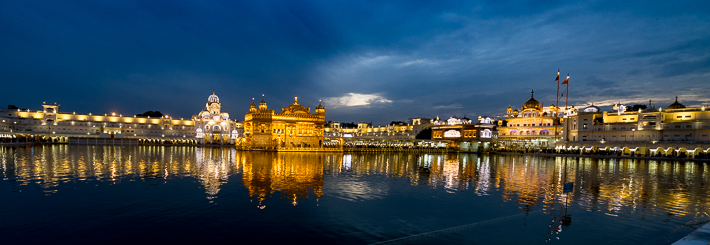
One of the highlights of our trip to India was seeing The Golden Temple in Amritsar. Amritsar is the center of Sikhism, and the Harmabdir Sahib (aka the Golden Temple) is the holiest shrine in Sikhism. It is the chief pilgrimage destination of the Sikhs living abroad and outside the city. Amritsar is the heart of the state of Punjab and the second largest city in Punjab housing 1.4 million people located in Northern India. There are more than 150,000 visitors who come to worship daily.
We visited both at sunset and again the following sunrise, hoping to capture some quieter moments. We often target our destination visits during the golden hour and the Blue Hour, to capture the best light. The Golden Hour is the hour after sunrise and before sundown, while the Blue Hour is a bit before sunrise and after sunset (so called caused because the sky turns into a deep blue to the camera).
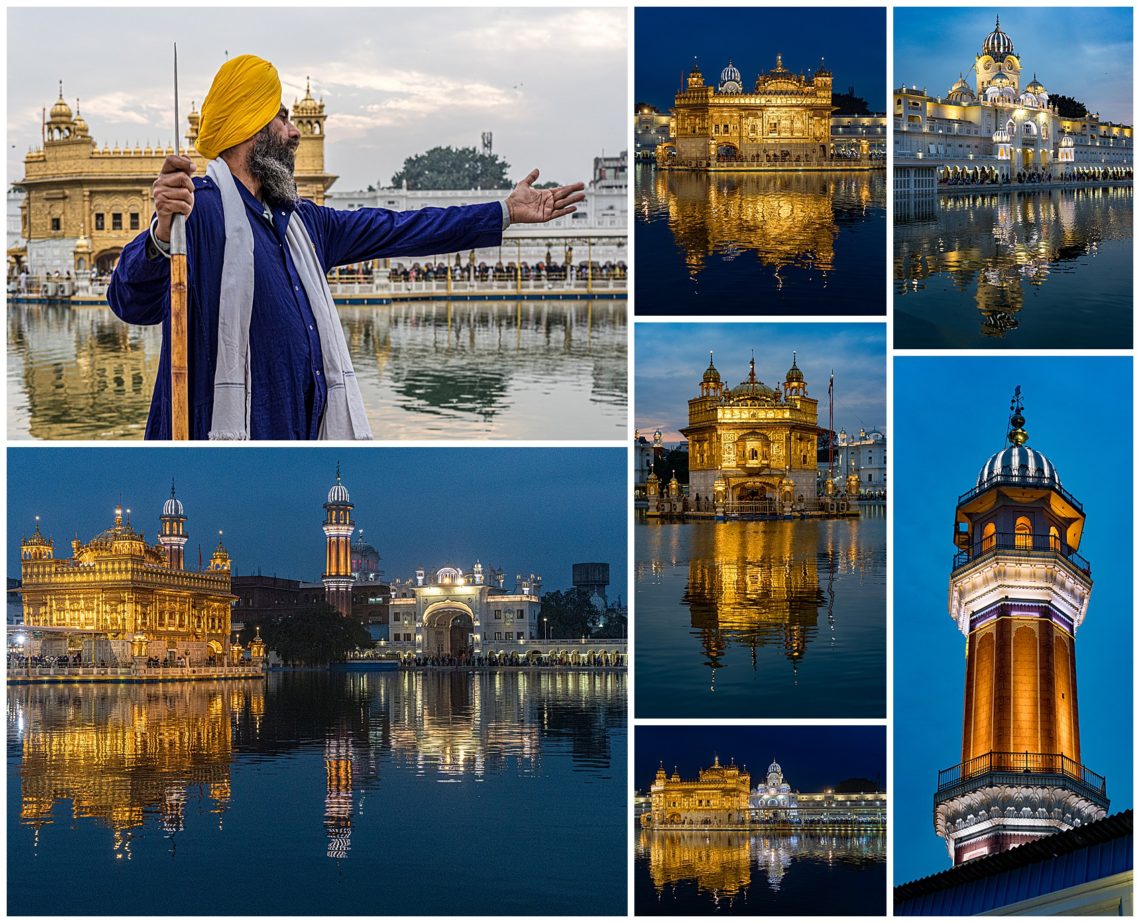
It is a long way to walk before reaching the Sikh complex. We had to take a tuk tuk from our bus to the boundary of the town, then walk through the town. It is quite crowded on the streets, before you reach the entrance of the Golden Tempe. Once you reach the Temple, neither socks nor shoes are allowed due to the religion’s requirement of purification and sanitation. The water through which you must walk bare-foot is cold and slimy, and the marble slippery. As such, westerners like us pause before stepping across the threshold. After passing through the purification pool, you must walk barefoot directly on the cold marble or the walking mats for the remainder to your time in the temple. If you are not accustomed to walking on hard, cold marble, your feet will tell you the next day
Once inside the temple grounds, we walked the circumference of the pool to get our bearings and decide which would provide the best night-time angles. The complex is quite large, and the block of images above are only a portion of the images we captured after the sun went down and the lights went on.
Right around 6:30 pm, the building lights are slowly turned on, and the complex slowly lights up, until you see mesmerizing building reflections on the pond. It seems surreal, especially against a dark, blue sky. The pond in front of the Golden Temple is called Amrit Samovar, or the Pool of Nectar Immortality.
There are security guards all dressed in blue with their javelins (top-left) who appreciated posing for the tourists around the temple.
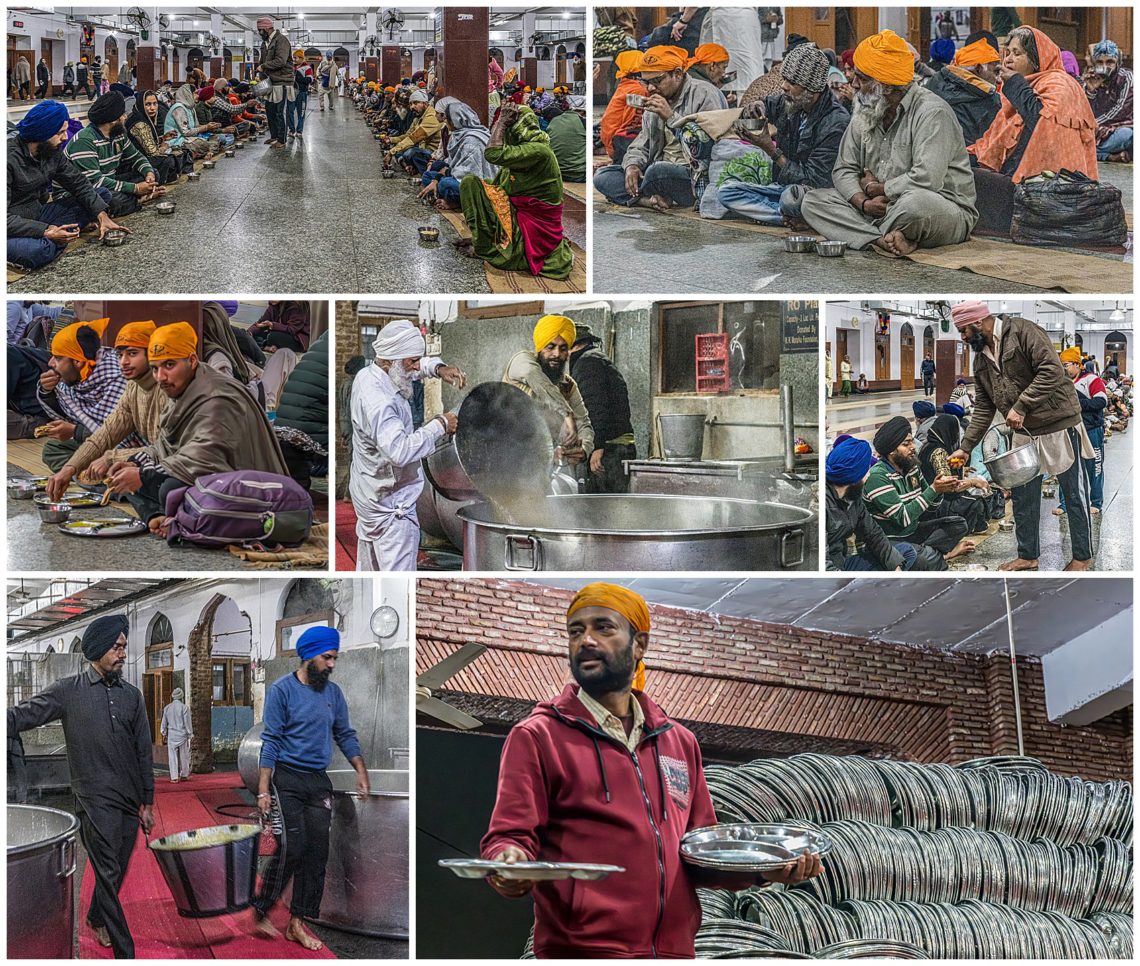
We returned the following morning to capture images without as many people in the scene. The Sikh religion prides itself on community service, and one of its most visible works is feeding the poor every day. Anyone can walk in and ask for a free meal, regardless of your origin or religious beliefs. We first stopped in their community kitchen to watch them cook these meals and hand them out to anyone who asked. It was raining when we left the community kitchen to watch the cleansing ritual, and the tile was extremely slippery, especially around the bathing area.
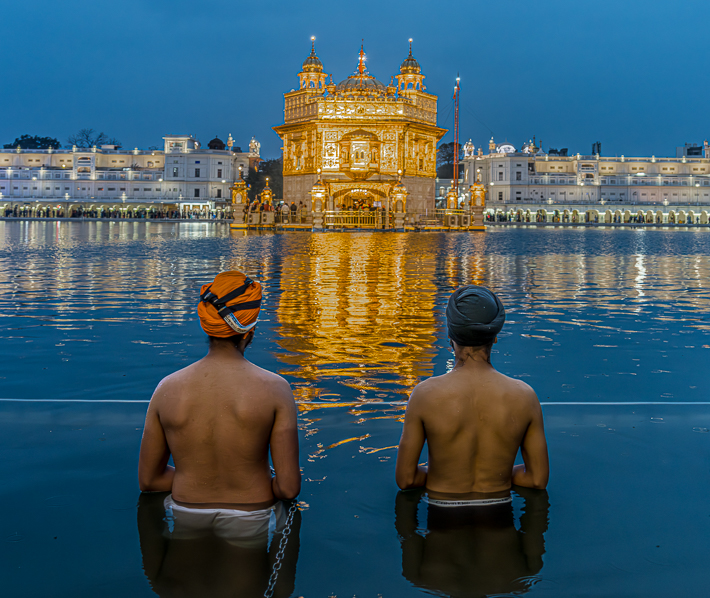
Devotees dip into the holy manmade pool known as Amrit Sarovar, and the water is believed to have healing powers. Women come in fully clothed, whereas men don bathing shorts and robes. Many also hold a heavy chain to lower themselves into the water. The turbans above are decked out with a small machete on top. This Sikhs welcome women as well as outsiders to bathe in the pool.
Anyone can take a dip in Samovar (pool of nectar), but the use of soap and shampoo is prohibited as is swimming. Before entering the Temple, an important step is washing your feet to keep the floors clean.
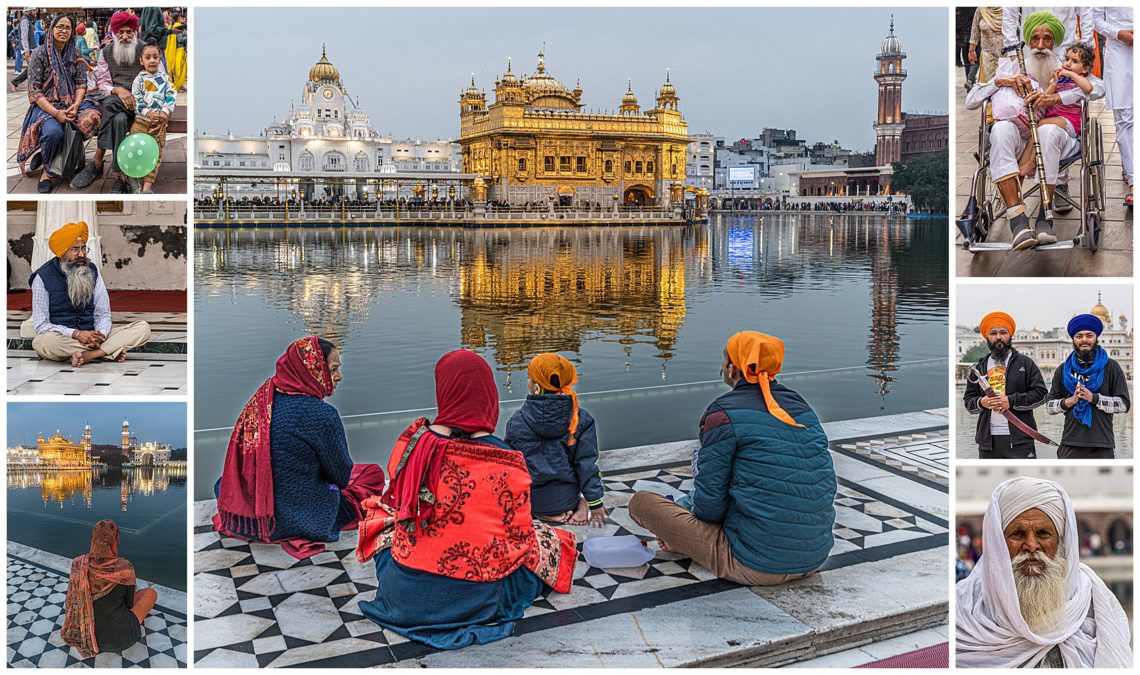
Pilgrams come to pray at the holy shrine 24/7, and many sit along the edge of the pond to pray and meditate. After 3:00 AM, the crowds have dissipated. This is a spiritual pilgrimage site, holy and pure, and in the early morning hours, the reflections of the buildings and energy are incredible. A note that the Temple is built with marble but plated with real gold.
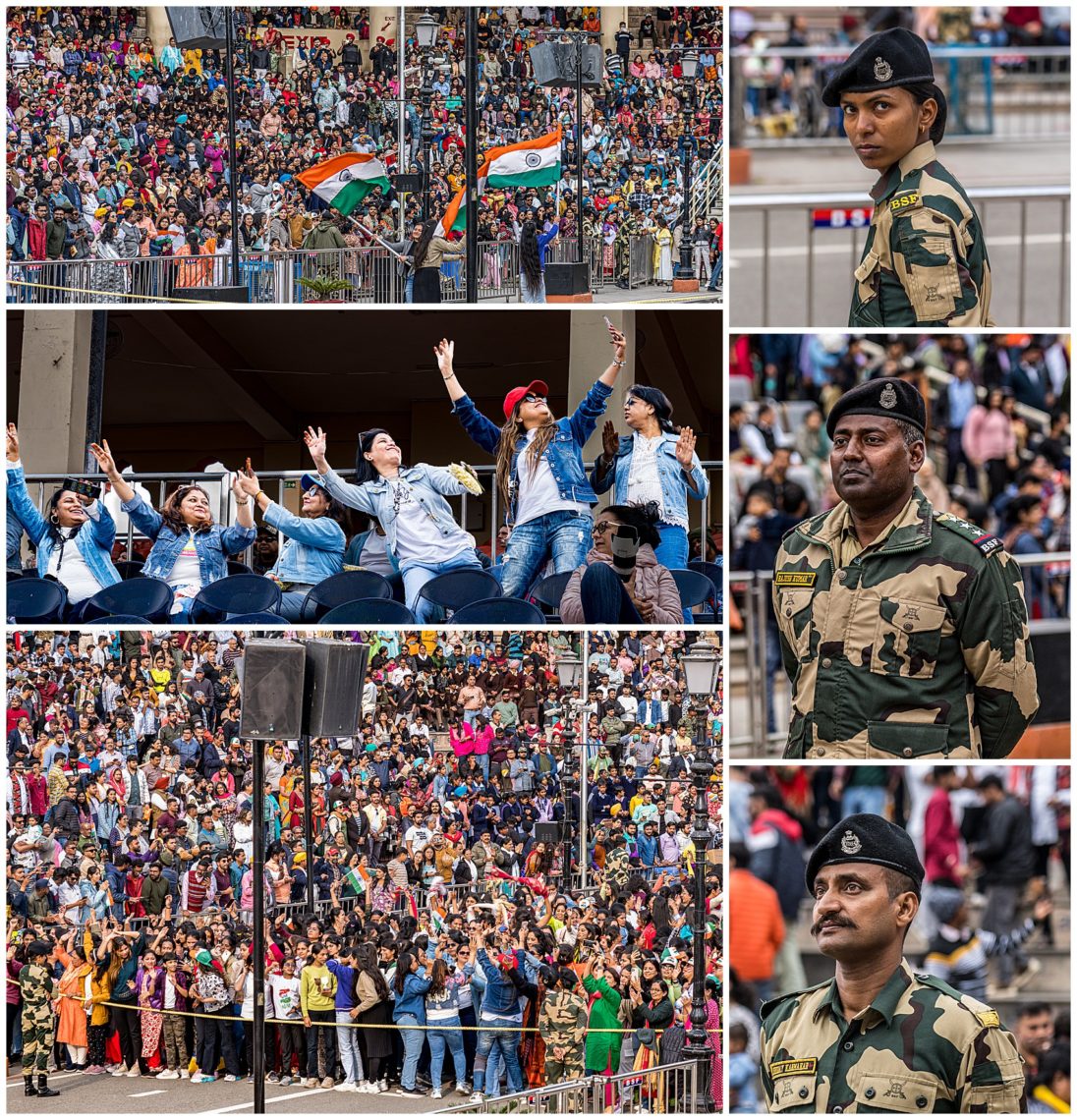
Every day is a colorful, boisterous ceremony of the changing of the guards at the border crossing between India and Pakistan, called Atari-Wagah Border Ceremony. Just before sunset there is a blustery parade by Border Security Forces from both countries, which ends with the lowering of the flags for both sides. It feels like watching a finale at a high school football game, with both sides cheering. Even the cheer-leading patrol soldiers get into it by high stepping then leading the crowds to chants.
The Indian crowds can be seen in the left column, while the right column includes a few images of the military that was keeping order in our part of the stands (where the foreigners received premium seating).
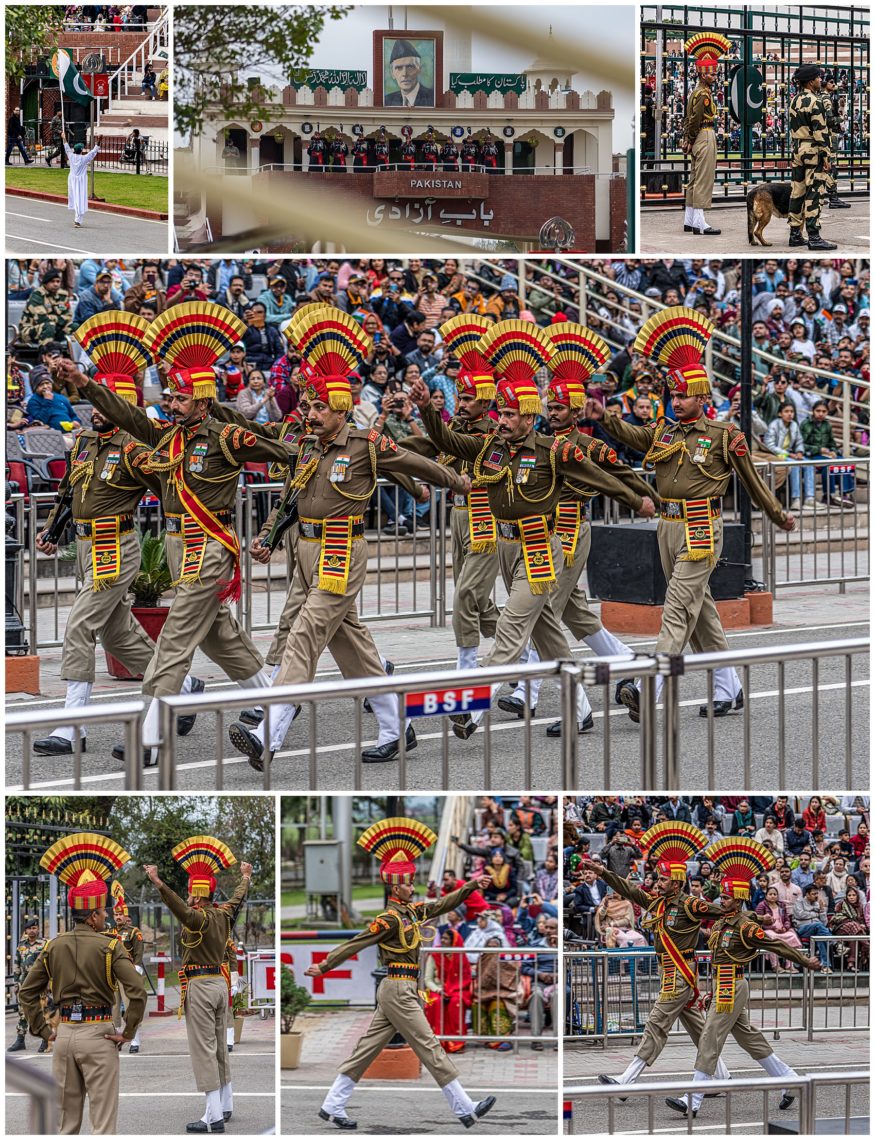
The Changing of the Guard is a highly choreographed event held daily by both the Indian and Pakistani armies on their sides of the border gate. Though our seats were considered premium, it was actually hard to see much of what was going on, due to the copious security fences places around the parade grounds.
Both sides emphasized much high-stepping marching, with the solder’s foot reaching all the way to his nose. We could barely see through the Pakistani side, though a small gap in the security gate allowed the image of their building (top-middle), The Pakistani also had a one-legged person doing some whirling dervish dancing, though we were barely able to see it from our side (top-left).
In essence, there were no photo taking opportunity like the event documentation we saw on YouTube, which was clearly shot from the stands above. That excellent view of the events was blocked off and only only available to military VIPs.
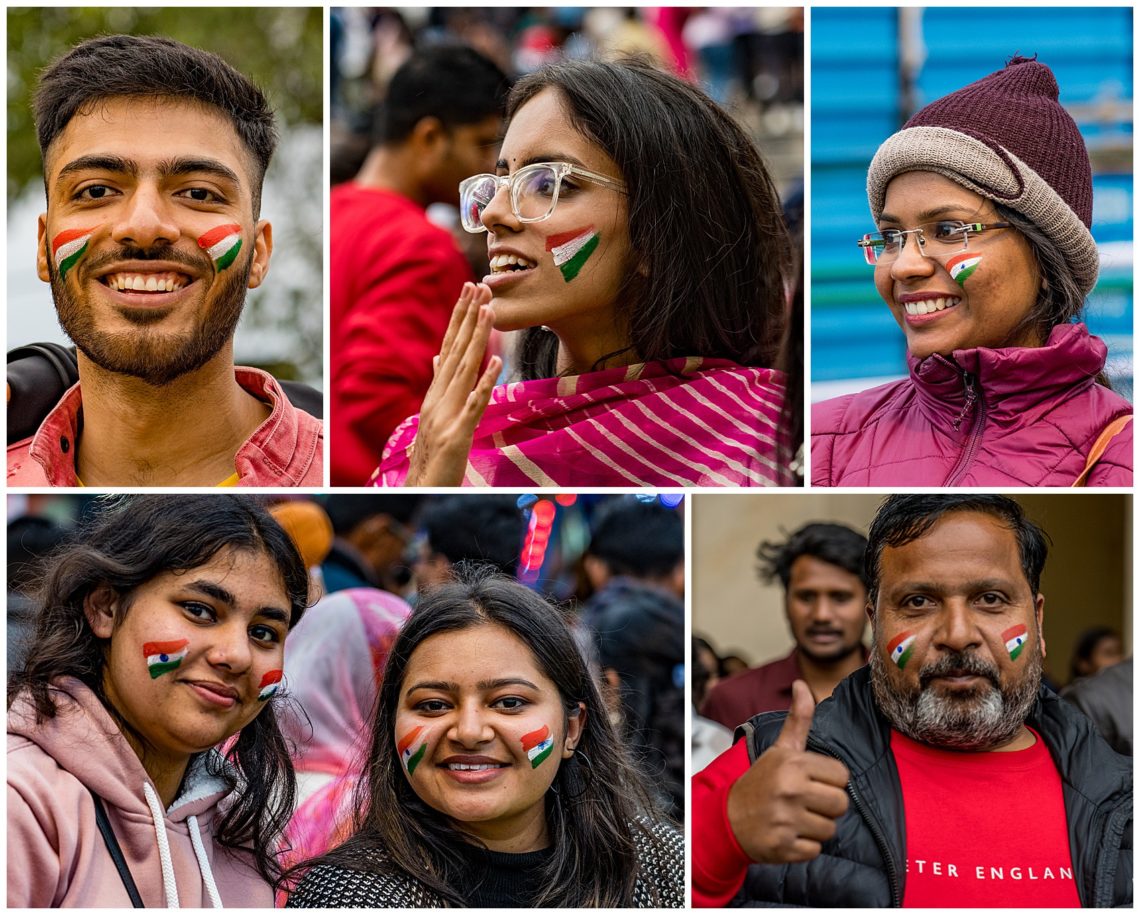
The audience was boisterous through the entire event. Many of them showed their patriotism by painting Indian flags on their faces.
Attari-Wagah Border Ceremony at the India/Pakistan border , also called Beating Retreat border ceremony. Because of crowd control, we were not able to move away from our assigned seats, but this video hopefully can show the atmosphere of the ceremony.